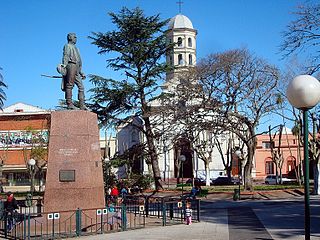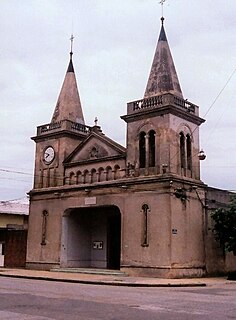
Paso de los Toros is a city of the Tacuarembó Department in Uruguay.
Villa del Carmen or Carmen is a town in Durazno Department of central Uruguay, the third largest populated place in the department, after Durazno and Sarandí del Yí.

Pando is a city in the Canelones Department of Uruguay. It is an important commercial and industrial centre which has become part of the wider metropolitan area of Montevideo.

Tarariras, is a small city in the south of the Colonia Department of southern Uruguay.
Sequiera is a village ("pueblo") in the south of the Artigas Department in northwestern Uruguay.
Estación Tapia or Tapia is a village or populated centre in the Canelones Department of southern Uruguay.
Totoral del Sauce is a village or populated centre in the Canelones Department of southern Uruguay.
Ombúes de Lavalle is a small city located in the north of Colonia Department in southwestern Uruguay. It is named after the Argentine General Juan Lavalle. The term «Ombúes» is the Spanish plural for «Ombú», a tree originary of the Pampas region, in southern South America, and a national symbol of both Argentina and Uruguay.

Blanquillo is a village in the Durazno Department of central Uruguay.
Carlos Reyles is a village in the Durazno Department of central Uruguay.
La Paloma is a village in the Durazno Department of central Uruguay.

Sarandí del Yí is a city in the Durazno Department of central Uruguay.
Lapuente is a village, or populated centre, in the Rivera Department of northeastern Uruguay.

José Enrique Rodó is a small town in the Soriano Department of western Uruguay.
Villa Darwin is a village or populated centre in the Soriano Department of western Uruguay.
Las Toscas is a village or populated centre in the Tacuarembó Department of northern-central Uruguay.

Paso Bonilla is a village or populated centre in the Tacuarembó Department of northern-central Uruguay.
Paso del Cerro is a village or populated centre in the Tacuarembó Department of northern-central Uruguay.

San Gregorio de Polanco is a small city in the Tacuarembó Department of northern-central Uruguay.









